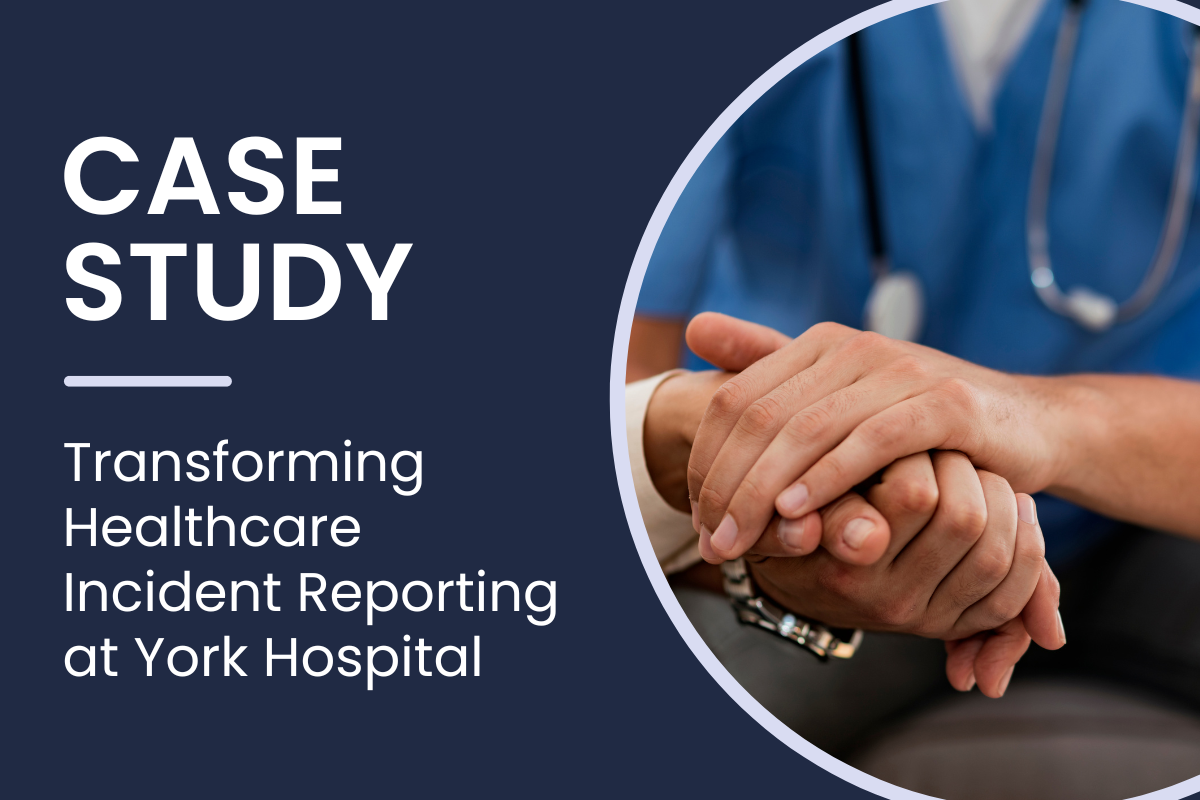4 min read
Transforming Healthcare Incident Reporting at York Hospital
Performance Health Partners
May 6, 2024

In a bold move to redefine healthcare incident reporting, York Hospital partnered with Performance Health Partners (PHP), transforming their approach to patient safety. This case study explores York Hospital’s challenges with its former system, the seamless transition to PHP’s solution, and the organization’s subsequent strides in patient care and safety.
Organization Introduction
York Hospital is an independent community hospital, with 48 inpatient beds and several primary and specialist practices throughout southern Maine.
The hospital embarked on a transformative journey with Performance Health Partners (PHP) to revolutionize its incident reporting process and improve patient safety.
Background: Laying the Groundwork for Change
York Hospital has long been a pillar of community healthcare in southern Maine, providing essential services with a focus on patient safety and quality care. Despite the hospital's commitment to excellence, they faced challenges due to an outdated electronic incident reporting system.
Tim Boyd, the Director of Quality and Risk, characterized the hospital’s previous system as “a tangled web of processes,” which made extracting meaningful data and following up on incidents a complex task.
Kristen Gustavsen, a Performance Improvement Specialist at York Hospital, pointed out their former platform’s critical flaws: “Communication breakdowns were frequent, and were often relegated to back-and-forth emails.”
These systemic issues underscored the need for a modern solution that could streamline the healthcare incident reporting process and enhance data usability.
The Challenge: Confronting Data Inefficiencies
Beyond the issues of communication silos and event follow up, the principal challenge York Hospital faced was the cumbersome nature of its old incident reporting system, which was not built to handle the nuances of modern healthcare data analysis. The system’s design, overly reliant on text fields, was not conducive to efficient incident tracking or event analysis.
“It was a time-consuming affair, fraught with difficulties in data extraction and analysis, which often left us reacting to situations rather than preventing them,” Boyd remarked on the system’s inability to support proactive patient safety measures.
This critical challenge impeded the hospital’s ability to rapidly identify and mitigate patient safety risks, emphasizing the urgent need for a robust system capable of detailed data analysis and efficient incident management.

The Turning Point: Selecting Performance Health Partners for Healthcare Incident Reporting
These shortcomings underscored the urgent need for a system that could fulfill the hospital’s requirements for actionable, meaningful data, prompting the switch to Performance Health Partners. This partnership marked a crucial shift in York Hospital’s incident reporting, transitioning from a disjointed and inefficient model to a streamlined, data-driven approach that significantly enhanced patient safety initiatives.
From the outset, York Hospital was impressed by PHP’s proactive engagement and commitment to client success. “From our first encounter with PHP setting up a demo, to implementation, their customer service has been among the best of any vendor we’ve ever worked with,” praised Gustavsen.
Boyd added, “The transition to PHP’s system marked a significant upgrade. The reports were not only cleaner and more modern but also allowed us to drill down into the data, which was a game-changer for us. Their response to our feedback and quick system enhancements truly impressed us.”
The solution’s adaptability enabled York to tailor reports and delve deeper into data, driving impactful safety initiatives.
Tangible Outcomes: A New Era of Safety & Efficiency
Following the implementation of PHP’s system, York Hospital experienced a significant shift in healthcare incident reporting and patient safety management.
A notable 12% increase in incident reporting was observed, signaling a rise in staff engagement and a heightened focus on patient safety.
The increase in adoption and utilization of the platform by staff was largely due in part to the user-friendliness of PHP’s platform, Boyd noted. “Its radio buttons and dropdown menus make data entry a breeze, meaning our staff can spend less time on the form-filling mechanics and more on the critical analysis, making our incident tracking process both more effective and efficient,” he explained. “Plus, they don’t have to sit around contemplating the ‘lessons learned’ while filling out a form; the system helps guide that understanding naturally.”
PHP’s advanced analysis capabilities have enabled York Hospital to dissect and understand the nuances of patient incidents like never before. Through detailed data, the hospital is now able to analyze safety events by day, shift, and underlying risk factors, leading to targeted quality improvement projects.
For example, they discovered that most patient falls occurred on Fridays and during day shifts, with a significant percentage around shift changes. This insight spurred initiatives to bolster staff presence and monitoring during these peak times, enabling York Hospital to target their safety interventions more effectively.
Furthermore, medication errors, particularly those related to the administration of high-risk medications like heparin, have been more accurately tracked and analyzed since the adoption of PHP’s system.
Gustavsen noted the specific improvements in this area: “We’ve seen a significant uptick in reported incidents involving heparin, which prompted us to delve deeper into these events. This led to the formation of a medication safety subcommittee within our pharmacy and therapeutics committee, primarily driven by the recurring heparin-related issues.”
The ability to pinpoint and scrutinize these incidents has allowed York Hospital to not only address specific concerns around heparin but also to refine their overall medication management processes, enhancing patient safety and care quality across the board.
Looking Forward: Sustaining Improvement & Expanding Impact
As York Hospital continues to navigate the complexities of healthcare, PHP’s incident reporting software remains an integral tool in their mission to provide safe, high-quality patient care.
Boyd reflected on the progress: “I believe we’re now more effective in identifying patient safety trends, such as the heparin issue, which indicates our enhanced ability to monitor and address recurring patterns.”
As York Hospital evolves, so, too, does PHP’s software, adapting and expanding to meet the hospital’s growing needs.
“The expansibility of PHP’s Incident and Event Reporting solution is particularly impressive, offering us the freedom to develop and integrate new forms and functionalities as our needs evolve,” Gustavsen shared. “In the past, with other platforms, my suggestions often felt unheard, with only one of my ideas implemented over many years. In contrast, with PHP, our ideas are not only heard but acted upon swiftly, often seeing changes implemented within a week. This responsiveness and ability to adapt quickly to our feedback has been a game-changer for us, enabling continuous improvement and innovation in our patient safety efforts.”
Conclusion: A Partnership Defined by Innovation & Support
York Hospital’s partnership with Performance Health Partners is a testament to the power of innovative technology and customer-centric support in advancing patient safety. The hospital’s journey from a cumbersome incident reporting system to a streamlined, data-driven solution showcases the transformative impact of PHP’s software, setting a new standard in healthcare incident reporting and patient safety.


